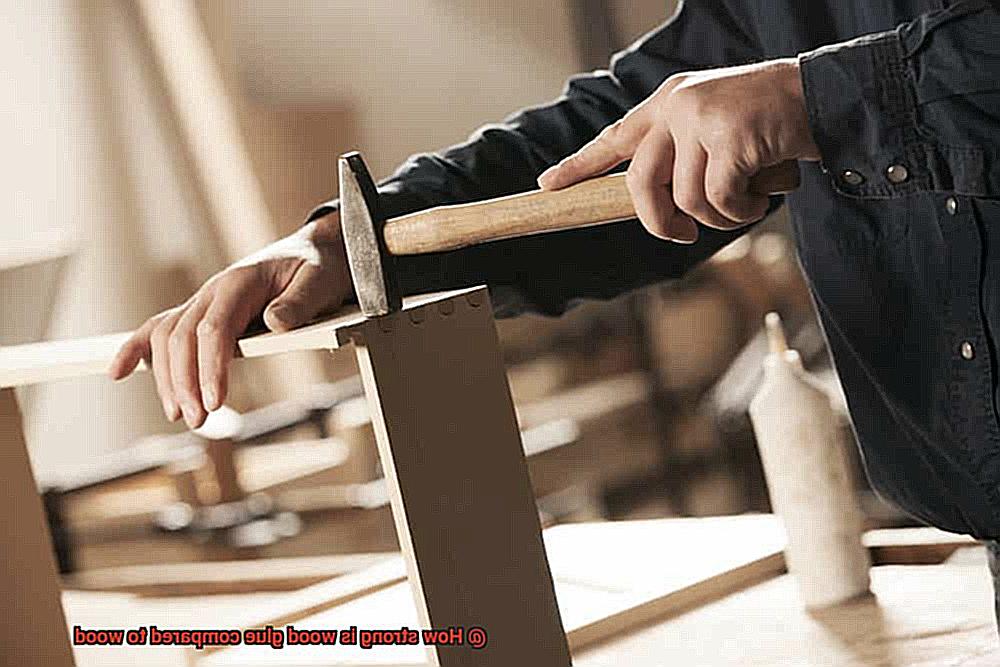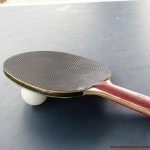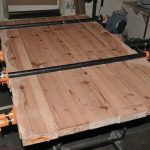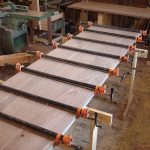Whether you’re a woodworking pro or just starting out, the glue you use can make or break your project. That’s where wood glue comes in, ready to join pieces together and withstand the test of time. But how does it stack up against its mighty partner, wood? Get ready to explore this captivating clash between adhesive and material.
In this blog post, we’ll dive deep into the world of wood glue and dissect its strengths and weaknesses compared to its solid counterpart. Get ready for an eye-opening journey that will help you unravel the mystery of achieving the perfect bond. By the end, you’ll have all the knowledge you need to make informed decisions for your woodworking ventures. So let’s get started on this thrilling quest.
What is Wood Glue?
Contents
Wood glue, also known as carpenter’s glue or PVA glue (polyvinyl acetate glue), is an adhesive that is specifically designed for bonding wood surfaces together. It is made from a combination of water, resin, and a thickening agent. The resin used in wood glue is derived from vinyl acetate monomer, which undergoes a polymerization process to form polyvinyl acetate. This results in a strong and durable adhesive that can effectively bond wood fibers.
Wood glue is widely used in woodworking and carpentry projects due to its strong bonding properties and versatility. It has the unique ability to penetrate the porous surface of wood, creating a tight bond as it dries. This penetration strengthens the joint and helps prevent future separation.
There are different forms of wood glue available, including liquid, gel, and powder. Liquid wood glue is the most common type and can be easily applied using a brush or squeeze bottle. Gel wood glue has a thicker consistency, making it suitable for vertical applications or bonding irregular surfaces. Powdered wood glue needs to be mixed with water before use and offers longer working time.
It’s important to note that different types of wood glues have varying drying times and bond strengths. Some dry quickly within minutes, while others may take several hours or even days to fully cure. Certain types of wood glues offer stronger bonds than others. For high-strength applications such as structural joints or outdoor use, specialized wood glues are available.
The Strength of Wood
Wood, a versatile and widely used material in construction and woodworking, possesses incredible strength and durability. Understanding the various factors that contribute to the strength of wood is crucial in selecting the most suitable wood for specific applications.
Density plays a significant role in determining wood’s strength. Denser woods, such as oak and maple, have a higher concentration of cellulose fibers, resulting in higher strength. These hardwoods are renowned for their density and ability to withstand external forces.
Another factor that affects wood’s strength is its grain orientation. Wood is anisotropic, meaning it possesses different properties in different directions. The arrangement of wood fibers along the grain direction gives it its greatest strength. When forces are applied parallel to the grain, wood is less likely to break or deform.
Moisture content also impacts wood’s strength. High moisture can cause swelling or shrinking, leading to changes in its physical properties and weakening its structure. Dry wood generally exhibits greater strength compared to wood with high moisture content.
Extreme temperatures can also affect wood’s strength. High temperatures can degrade the cellulose fibers, reducing overall strength. Additionally, temperature fluctuations can cause expansion or contraction, potentially compromising structural integrity.
To measure wood’s strength, several tests are conducted, including bending, compression, and tensile tests. These tests determine the maximum load a piece of wood can withstand before failure or deformation occurs. The results from these tests guide engineers and builders in selecting appropriate wood for specific applications.
When assessing the strength of wood glue compared to wood itself, it is crucial to recognize that the overall strength of a glued joint relies heavily on the strength of the wood being bonded. Wood glue forms chemical bonds with cellulose fibers within the wood, enhancing the bond between pieces. A properly glued joint can be as strong as or even stronger than the wood itself. However, factors such as wood type, glue quality, and application technique can impact the strength of the bond.
How Does Wood Glue Work?
Wood glue is a remarkable adhesive that creates a powerful and lasting bond between two pieces of wood. The magic lies in its ability to penetrate and bind with the very fibers of the wood, ensuring a secure connection that can withstand the test of time.
When wood glue is applied to the surfaces of two pieces of wood, it undergoes a process called curing. Curing occurs as the glue dries, causing the water within the glue to evaporate. As the water evaporates, the adhesive thickens and hardens, creating a strong chemical bond between the wood fibers.
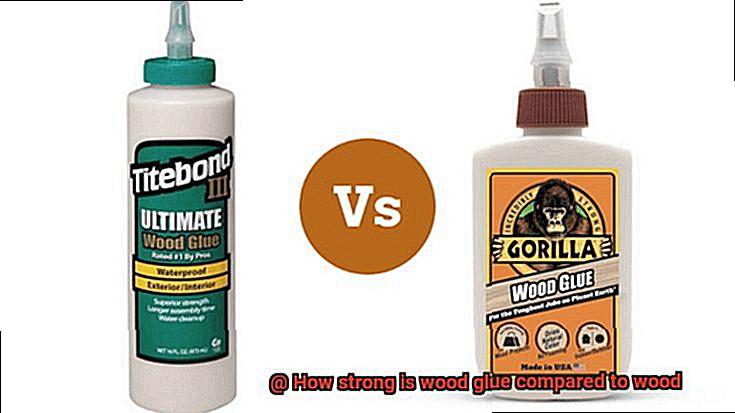
One of the key factors in how wood glue works is its capacity to infiltrate the porous surface of wood. Wood possesses tiny channels and openings that can absorb liquids, and when wood glue is applied, it seeps into these pores, forming a mechanical bond with the wood fibers. This penetration ensures that the glue becomes an integral part of the wood itself, creating a connection that is stronger than the wood alone.
Another crucial element in how wood glue works is the formation of a “glue line.” This refers to the thin layer of adhesive that remains between the two joined pieces of wood. The quality and thickness of this glue line are vital in determining the strength and stability of the bond. A well-formed and even glue line ensures that there are no weak spots or gaps in the connection, resulting in a sturdy and reliable joint.
Different types of wood glues offer varying properties and working mechanisms to cater to different needs. Some are designed to be water-resistant, making them ideal for outdoor applications or areas prone to moisture exposure. Others may have faster drying times or extended open times, allowing for more flexibility during assembly.
Different Types of Wood Glue
PVA (Polyvinyl Acetate) Glue:
PVA glue, also known as yellow or white glue, is versatile and suitable for various woodworking projects. It forms a strong bond and can be used on porous and non-porous surfaces. PVA glue is easy to use, dries clear, and can be sanded and painted over once it has dried. Its versatility makes it a popular choice among woodworkers for general woodworking tasks, such as joining wood pieces together, laminating surfaces, or repairing furniture.
Epoxy Glue:
Epoxy glue consists of two parts – a resin and a hardener – that are mixed together before application. It creates an incredibly strong bond that can withstand high levels of stress. Epoxy glue is resistant to moisture, heat, and chemicals, making it ideal for heavy-duty woodworking projects or bonding dissimilar materials. Its remarkable strength and durability make it suitable for applications like boat building, furniture construction, or repairing wooden structures exposed to extreme conditions.
Polyurethane Glue:
Polyurethane glue expands as it cures, filling in gaps between wood surfaces and creating a strong bond. It is waterproof and suitable for both indoor and outdoor applications. Polyurethane glue can also be sanded and painted over once it has dried. Its ability to expand into crevices and its resistance to water make it an excellent choice for outdoor furniture assembly, joining hardwoods, or repairing wooden items exposed to moisture.
Cyanoacrylate Glue (Super Glue):
Cyanoacrylate glue, commonly known as super glue, forms an instant bond between wood surfaces. It is fast-drying and ideal for small woodworking projects or bonding small pieces of wood together. However, super glue is not suitable for larger projects or surfaces exposed to moisture. Its quick bonding capability and strength make it perfect for intricate woodworking tasks, such as model making or repairing delicate wooden items.
Hide Glue:
Hide glue has been used for centuries in woodworking. It offers excellent strength and dries to a hard and rigid finish. Hide glue requires careful preparation and application, as it needs to be heated before use. It is often favored by traditional woodworkers or those who require reversible bonds. Its ability to create strong bonds that can be easily reversed using heat and moisture makes it suitable for antique furniture restoration or musical instrument making.
PVA Glue
PVA glue, also known as Polyvinyl Acetate glue or wood glue, is a versatile adhesive that is widely used in woodworking and carpentry projects. It is highly regarded for its strong bonding properties and ease of use, making it a favorite among professionals and DIY enthusiasts.
The strength of PVA glue lies in its ability to create a robust bond with wood. When applied correctly and given enough time to dry, PVA glue forms a joint that is incredibly difficult to break. This is because the adhesive can penetrate the wood fibers, creating a tight connection that rivals the strength of the wood itself.
However, it’s important to consider several factors that can affect the strength of the bond. The type and quality of the wood being bonded, as well as the surface preparation and application technique, all play a role in determining the bonding strength. Different types of wood have varying absorption rates, which can impact how well the glue adheres. Smooth and clean surfaces tend to create stronger bonds compared to rough or dirty ones.
To achieve optimal bonding strength with PVA glue, it is crucial to follow the manufacturer’s instructions. This typically involves applying an even layer of glue on both surfaces and firmly joining them together. Applying pressure on the joint during drying or using clamps can further enhance the bond strength.
One standout feature of PVA glue is its water-based formula. Unlike solvent-based adhesives, PVA glue does not emit strong odors or harmful fumes, making it safe to use indoors. Its water solubility also allows for easy cleanup with just soap and water before it dries.
Although PVA glue offers impressive bonding strength, it does have limitations. It may not be suitable for applications that require high moisture resistance or extreme temperature durability. In such cases, specialized adhesives like epoxy or polyurethane glues are more appropriate choices.
Epoxy Glue
Epoxy glue is a remarkable adhesive that woodworkers rely on for its unrivaled strength and resilience. It serves as the backbone of woodworking projects, offering a bond that can withstand the test of time. Here’s what you need to know about epoxy glue in woodworking:
- Types of Epoxy Glue: Fast-curing, slow-curing, and clear epoxy are the main types available. Fast-curing epoxy is perfect for swift projects, while slow-curing epoxy allows for more work time. Clear epoxy is ideal when aesthetics matter.
- Applications: Epoxy glue finds its purpose in a myriad of woodworking applications including joining wood pieces, repairing damaged wood, laminating veneers, filling gaps and cracks, and bonding wood to other materials like metal or plastic.
- Mixing and Application: Epoxy glue consists of two components – resin and hardener – which must be skillfully mixed before application. Adhering to the correct mixing ratios outlined by the manufacturer is essential. Once blended, the epoxy glue should be meticulously applied to both surfaces using brushes or spatulas.
- Working Time and Curing: Time is of the essence when working with epoxy glue as it has a limited working time before it sets. Therefore, efficiency is key. However, despite the rapid initial hardening, it requires several hours, or sometimes even overnight, to thoroughly cure. During this process, clamping or securing the glued surfaces is crucial to ensure a rock-solid bond.
- Strength and Durability: Epoxy glue creates a bond with wood that surpasses the strength of the wood itself. Its exceptional resistance to water, chemicals, and temperature fluctuations makes it suitable for indoor and outdoor applications alike.
- Tips for Best Results: Achieving optimal results with epoxy glue involves meticulous surface preparation by cleaning and removing existing finishes. A snug fit between the surfaces being glued is crucial, along with applying clamping pressure during the curing process. Furthermore, it is important to avoid excessive glue application, as surplus adhesive can be challenging to clean up and may mar the final appearance of the project.
Polyurethane Glue
Polyurethane glue, also known as PU glue, is a remarkable adhesive that has become a staple in the world of woodworking. This versatile glue offers several advantages that make it a top choice for bonding wood and other materials.
The first notable advantage of polyurethane glue is its ability to create a bond that is often stronger than the wood itself. When applied correctly, this glue forms a chemical reaction with moisture present in the wood, causing it to expand and penetrate deep into the wood fibers. This unique property allows for a strong and durable connection that can withstand heavy stress and strain.
Another benefit of polyurethane glue is its excellent gap-filling properties. It has the ability to fill voids and gaps between two pieces of wood, making it ideal for joining irregular or uneven surfaces. This ensures a solid connection even in imperfect joints, providing stability and strength to the overall structure.
Polyurethane glue is also highly resistant to moisture and temperature changes. Once cured, it becomes waterproof, making it suitable for outdoor projects or applications exposed to high humidity. It maintains its strength even when subjected to extreme temperature conditions, allowing it to withstand both scorching heat and freezing cold.
However, it is important to note that polyurethane glue does have some disadvantages. One drawback is its longer curing time compared to other wood glues. It typically takes several hours to fully cure, which can prolong the completion time of a project. Additionally, the expanding nature of this glue can cause foaming or bubbling during the curing process, requiring careful application to achieve a clean and neat finish.
Conclusion
In conclusion, wood glue possesses an impressive adhesive prowess, capable of forging connections between wooden pieces that rival, if not surpass, the strength of the wood itself. The bond’s resilience hinges on a multitude of factors: the type and caliber of the wood involved, meticulous surface preparation, and deft application techniques. Each variant of wood glue exhibits distinctive attributes tailored to specific applications.
PVA glue, also known as polyvinyl acetate or wood glue, emerges as a versatile adhesive that establishes formidable bonds with wood. Its user-friendly nature and transparent drying qualities render it a favorite among woodworking aficionados for a wide array of tasks. Epoxy glue boasts an unyielding reputation for its exceptional might and durability. It weaves bonds capable of enduring immense strain while remaining impervious to moisture, heat, and chemicals. Meanwhile, polyurethane glue’s unique ability to expand as it cures allows it to fill in crevices effectively while providing unparalleled water resistance.
To achieve optimal bonding strength when utilizing wood glue, adherence to the manufacturer’s instructions is paramount. Meticulous surface preparation coupled with judicious clamping during the curing process serve to amplify the bond’s fortitude. Wood glue presents distinct advantages over solvent-based adhesives such as ease of use, versatility, and enhanced safety measures.
Ultimately, comprehending both the merits and drawbacks of wood glue in comparison to its wooden counterpart proves indispensable for realizing triumphant woodworking ventures. Armed with this knowledge and armed with adept techniques, you can forge robust connections destined to withstand the trials of time.

